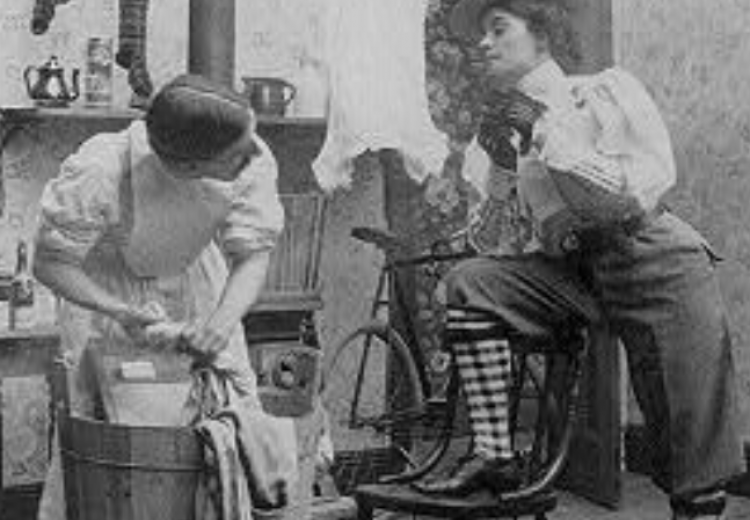Charlotte Perkins Gilman’s “The Yellow Wall-paper” & the “New Woman”

The New Woman, wash day (1897).
"Every kind of creature is developed by the exercise of its functions. If denied the exercise of its functions, it can not develop in the fullest degree."
—Charlotte Perkins Stetson (Gilman), from Hearing of the National American Woman Suffrage Association. Committee on the Judiciary, House of Representatives, Washington, D.C., January 28, 1896
Charlotte Perkins Gilman's story "The Yellow Wall-paper" was written during a time of change. In the early- to mid-nineteenth century, "domestic ideology" positioned American middle class women as the spiritual and moral leaders of their home. Such "separate spheres" ideals suggested that a woman's place was in the private domain of the home, where she should carry out her prescribed roles of wife and mother. Men, on the other hand, would rule the public domain through work, politics, and economics.
By the middle of the century, this way of thinking began to change with the introduction of the suffrage movement. As the early suffrage movement gained momentum, the concept of "The New Woman" began to circulate in the 1890s-1910s. Women's push for broader roles outside their home, roles that could draw on women's intelligence and non-domestic skills, was often met with backlash. In an effort to maintain separate sphere ideology, supporters turned to popular media such as magazines, advertisements, advice literature, and political cartoons to criticize women's changing roles.
This lesson plan, the first part of a two-part lesson, helps to set the historical, social, cultural, and economic context of Gilman's story. Students will examine primary source documents to gain an understanding of the roles of American middle-class women in the mid- to late-1800s. Lesson Two requires a close reading of "The Yellow Wall-paper" itself within the context of students' research and analysis.
Guiding Questions
What was life like for some American women in the mid- to late-nineteenth century and early twentieth century?
To what extent did Gilman's work serve as a reflection and speak back to a woman's place in society during the time?
How were gender roles in the U.S. affected by the suffrage movement?
Learning Objectives
Analyze how factors such as race, class, nationality/immigration status, and marital status affected a woman's place in society.
Examine the arguments made by those opposed to extending rights to women.
Evaluate the influence of this text and its place in the literary canon.
Evaluate the degree to which significant change was experienced by women in the U.S. during the nineteenth and early twentieth century.
